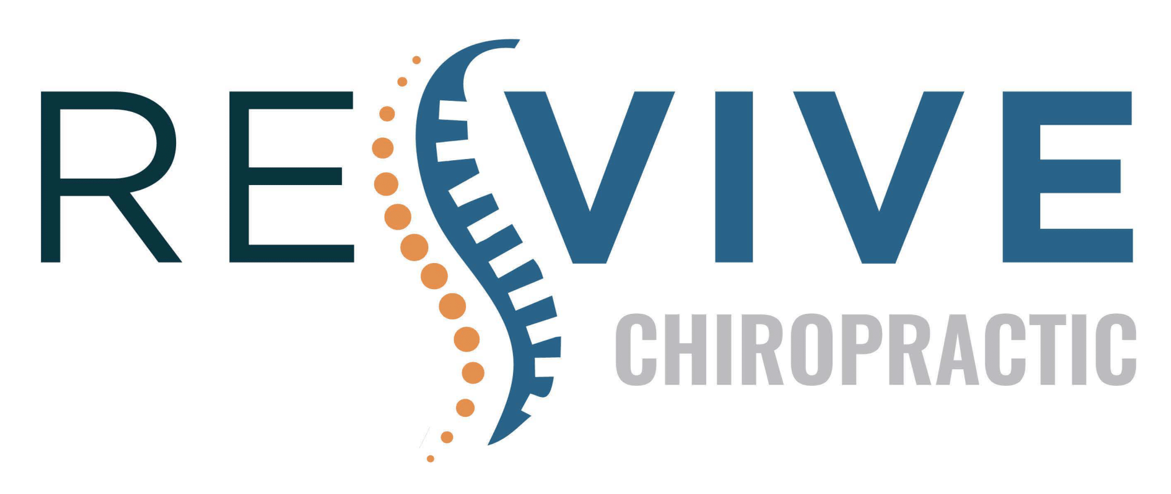If you're dealing with back pain, you might be considering various treatment options. Non-invasive solutions can offer significant relief without the risks associated with surgery. Techniques like physical therapy, chiropractic care, and acupuncture can restore your mobility and alleviate discomfort effectively. As you explore these methods, you'll discover how tailored exercise programs and ergonomic adjustments further enhance your recovery. But what specific strategies can you implement to maximize your results? Exploring these options could lead you to a more sustainable path toward back health.
Understanding Back Pain
Experiencing back pain can be frustrating and overwhelming, but understanding its causes is the first step toward relief. Back pain can stem from various sources, and identifying these can help you determine the best approach to alleviate it. Common causes include muscle strain, poor posture, herniated discs, and injuries. You might find that your daily habits contribute considerably to your discomfort.
When you sit for long periods without proper support, your spine can become misaligned, leading to increased strain on your back muscles. Similarly, if you lift heavy objects improperly, you risk injuring your back, which can result in acute pain. Chronic conditions like arthritis or sciatica can also lead to persistent discomfort, and recognizing these underlying issues is essential for effective management.
Lifestyle factors play a considerable role too. Lack of exercise can weaken your core muscles, which are crucial for supporting your spine. If you're overweight, the added pressure on your back can exacerbate pain. Stress can also manifest physically, leading to muscle tension and discomfort.
To truly understand your back pain, consider keeping a journal of your activities, posture, and pain levels. This can help you pinpoint triggers and patterns.
Benefits of Non-Invasive Approaches
Non-invasive approaches to back pain relief offer several advantages you might appreciate.
You can reduce the risk of surgery, improve your overall wellbeing, and save money with cost-effective treatment options.
Let's explore how these benefits can make a real difference in your recovery journey.
Reduced Risk of Surgery
While many people fear the prospect of surgery for back pain, opting for non-invasive approaches can considerably reduce that risk. By choosing methods like physical therapy, chiropractic care, or acupuncture, you're addressing your pain without the invasiveness of surgical procedures. These therapies often target the root cause of your discomfort, helping to ease symptoms effectively.
Non-invasive treatments allow your body to heal naturally, which minimizes the likelihood of complications associated with surgery, such as infections or extended recovery times. You won't have to worry about anesthesia risks or the potential for post-surgical pain. Instead, you'll be able to focus on methods that enhance your quality of life while promoting healing in a safe manner.
Moreover, the financial burden of surgery can be significant. Non-invasive options typically come with lower costs and often require fewer follow-up appointments.
As you explore these alternatives, you'll not only decrease your risk of undergoing surgery but also potentially find quicker, more sustainable relief from back pain. Embracing these non-invasive solutions can empower you to regain control over your health without the intimidating prospect of surgical intervention.
Enhanced Overall Wellbeing
Many people find that embracing non-invasive approaches to back pain not only alleviates discomfort but also considerably boosts their overall wellbeing.
These methods can transform your daily life, enhancing both physical and mental health. Here are some benefits you might experience:
- Improved Mobility: Engaging in gentle exercises and stretches can increase your flexibility and strength, allowing you to move more freely.
- Better Sleep: Relief from back pain often leads to improved sleep quality, helping you wake up refreshed and energized.
- Enhanced Mood: Many non-invasive techniques, such as mindfulness and physical therapy, can reduce stress and anxiety, elevating your overall mood.
- Increased Energy Levels: As your pain decreases, you may find you have more energy for everyday activities and hobbies, enriching your life.
Cost-Effective Treatment Options
A range of cost-effective treatment options for back pain can greatly improve your quality of life without breaking the bank.
Simple lifestyle changes, like incorporating regular exercise and stretching into your routine, can strengthen your back muscles and enhance flexibility. These activities don't require fancy equipment or gym memberships—just commitment and consistency.
Physical therapy is another affordable option. Many insurance plans cover sessions, and even without insurance, community clinics often offer low-cost services. A trained therapist can guide you through exercises tailored to your specific needs.
You might also consider over-the-counter pain relief medications, such as ibuprofen or acetaminophen. These can provide temporary relief without the need for prescriptions, helping you manage pain effectively.
Don't overlook the power of alternative therapies, like acupuncture or chiropractic care, which can be more affordable than you think. Many practitioners offer sliding scale fees or package deals.
Incorporating these cost-effective methods into your routine can help you find relief while keeping your finances intact.
Physical Therapy Techniques
When it comes to alleviating back pain, physical therapy techniques can play an essential role in your recovery.
These methods are designed to improve mobility, strengthen muscles, and promote healing without invasive procedures. You'll find that engaging with a physical therapist can lead to effective strategies tailored to your specific needs.
Here are four key techniques you might encounter:
- Stretching Exercises: These help improve flexibility and reduce tension in your back muscles. Regular stretching can prevent stiffness and enhance your range of motion.
- Strengthening Exercises: Your therapist may recommend specific workouts to enhance the muscles that support your spine. Building strength in your core and back can help prevent future injuries.
- Manual Therapy: This hands-on technique involves manipulating soft tissue and joints to alleviate pain and improve function. It can provide immediate relief and enhance the effectiveness of other treatments.
- Posture Training: Learning how to maintain proper posture during daily activities is vital for back pain management. Your therapist will guide you in techniques to support your spine, reducing strain and discomfort.
Chiropractic Adjustments
Chiropractic adjustments can offer significant relief from back pain by realigning your spine and improving overall function.
You'll find various techniques used in practice, each tailored to your specific needs.
Understanding the benefits and recommended frequency of treatments can help you make informed decisions about your care.
Benefits of Chiropractic Adjustments
Experiencing persistent back pain can be frustrating, but chiropractic adjustments offer a powerful solution. These adjustments can help restore your spine's alignment, leading to a range of benefits that improve your quality of life.
Here are four key advantages you might experience:
- Pain Relief: Chiropractic adjustments can alleviate discomfort by reducing nerve irritability and tension in the muscles.
- Improved Mobility: Regular adjustments can enhance your range of motion, allowing you to move more freely and without pain.
- Enhanced Posture: Adjustments help correct spinal alignment, which can lead to better posture and less strain on your back.
- Preventative Care: By maintaining spinal health, chiropractic care can help prevent future injuries or pain episodes.
With these benefits, chiropractic adjustments become an effective non-invasive solution for managing back pain.
You don't have to live with discomfort or limit your activities. By seeking chiropractic care, you're taking a proactive step towards regaining your mobility and improving your overall well-being.
Explore this option and see how it can make a difference in your back pain relief journey.
Techniques Used in Practice
To achieve the benefits of chiropractic adjustments, practitioners employ a variety of techniques tailored to individual needs. One common method is the spinal manipulation technique, where the chiropractor uses their hands or a specialized instrument to apply controlled, sudden force to a joint. This helps restore proper alignment and function.
Another approach is the diversified technique, which combines multiple methods to address specific issues. This technique often includes high-velocity, low-amplitude thrusts, which can quickly alleviate pain and improve mobility.
You might also experience the activator technique, where a small, spring-loaded device delivers a gentle impulse to the affected area, making it ideal for those who prefer a less forceful adjustment.
Soft tissue therapies, like myofascial release and trigger point therapy, can also be integrated into your treatment plan. These methods target tight muscles and fascia, relieving tension and enhancing overall function.
Your chiropractor might use therapeutic exercises to strengthen supporting muscles, promoting long-term recovery.
Frequency of Treatments Recommended
Many people wonder how often they should seek chiropractic adjustments for satisfactory back pain relief. The frequency of treatments can vary based on individual needs, the severity of the condition, and your chiropractor's recommendations.
However, here are some general guidelines to take into account:
- Initial Phase: If you're experiencing acute pain, you might need to visit your chiropractor 2-3 times a week for the first few weeks.
- Recovery Phase: As your pain decreases and your mobility improves, the frequency may drop to once a week or every other week.
- Maintenance Phase: Once you're feeling better, regular visits every 4-6 weeks can help maintain your progress and prevent future issues.
- Personal Factors: Age, lifestyle, and overall health can also influence how often you should go.
Ultimately, it's crucial to work closely with your chiropractor to develop a personalized treatment plan.
They'll assess your specific circumstances and adjust the frequency as needed to guarantee you achieve the best back pain relief.
Acupuncture for Pain Relief
Acupuncture offers a holistic approach to alleviating back pain, tapping into the body's natural healing mechanisms. This traditional Chinese practice involves inserting fine needles into specific points on your body, stimulating the flow of energy, or "qi." By doing this, acupuncture can help reduce inflammation, improve circulation, and promote relaxation, all of which can contribute to pain relief.
When you experience back pain, it can often stem from muscle tension, nerve irritation, or even poor posture. Acupuncture addresses these issues by targeting the root causes rather than just masking the symptoms. Many people find that after just a few sessions, they begin to notice a significant reduction in pain levels and an increase in mobility.
It's important to consult with a licensed acupuncturist who can create a customized treatment plan based on your specific needs. During your sessions, you may feel a slight sensation when the needles are inserted, but most people report feeling relaxed and even sleepy during the treatment.
In addition to relieving pain, acupuncture can also enhance your overall well-being by reducing stress and promoting better sleep. As your body begins to heal, you might find you're able to engage in daily activities with greater ease.
Mindfulness and Meditation
Mindfulness and meditation can be powerful tools for managing back pain.
By practicing breathing techniques and engaging in guided meditation, you'll find ways to relax both your mind and body.
Plus, incorporating mindfulness into your daily activities can help you stay present and reduce tension throughout your day.
Breathing Techniques for Relaxation
Breathing techniques play an essential role in relaxation, particularly when it comes to managing back pain. By focusing on your breath, you can reduce tension in your body and promote a sense of calm.
Here are four effective techniques you can try:
- Diaphragmatic Breathing: Breathe deeply into your diaphragm rather than your chest. This helps expand your lungs fully and promotes relaxation.
- 4-7-8 Breathing: Inhale for 4 seconds, hold for 7 seconds, and exhale for 8 seconds. This technique slows your heart rate and calms your mind.
- Box Breathing: Inhale for 4 seconds, hold for 4, exhale for 4, and hold again for 4 seconds. This rhythmic pattern can help ground you and ease anxiety.
- Pursed Lip Breathing: Inhale through your nose and exhale slowly through pursed lips, like blowing out a candle. This technique can help control breath and reduce stress.
Incorporating these breathing techniques into your daily routine can greatly enhance your relaxation and help you manage back pain effectively.
Give them a try, and notice how they make you feel!
Guided Meditation Practices
After practicing breathing techniques for relaxation, you might find that incorporating guided meditation can further enhance your ability to manage back pain. Guided meditation helps you focus your mind, reducing stress and tension that often contribute to discomfort. By listening to a recorded session or an instructor, you can immerse yourself in a calming narrative that encourages you to visualize healing and relaxation.
Start by finding a quiet space where you can sit or lie down comfortably. Close your eyes and tune into the guide's voice, letting it lead you through a series of calming visualizations and affirmations. As you progress, concentrate on your back, envisioning warmth and healing energy flowing through the affected areas. This practice can create a sense of physical relief and promote a deep state of relaxation.
Consistency is key, so try to integrate guided meditation into your daily routine. Even 10-15 minutes a day can make a significant difference.
As you cultivate mindfulness through meditation, you may find that your pain management improves, allowing you to engage more fully in your daily activities without the burden of back pain.
Mindfulness in Daily Activities
Integrating mindfulness into your daily activities can transform how you experience pain and stress. By being present in each moment, you can develop a greater awareness of your body and its signals, helping you manage back pain more effectively.
Here are four simple ways to practice mindfulness throughout your day:
- Mindful Breathing: Take a few minutes to focus solely on your breath. Inhale deeply and exhale slowly, noticing how your body feels with each breath.
- Body Scan: While sitting or lying down, mentally scan your body from head to toe. Acknowledge any tension or discomfort, and consciously relax those areas.
- Mindful Walking: During a short walk, pay attention to each step. Feel the ground beneath your feet and notice the rhythm of your movements.
- Mindful Eating: When you eat, focus on the flavors, textures, and scents of your food. Chew slowly and savor each bite, allowing yourself to appreciate the nourishment.
Massage Therapy Options
When you're dealing with back pain, exploring massage therapy options can be a game changer. Massage therapy offers a variety of techniques that can target the underlying causes of your discomfort, helping to relieve tension, improve circulation, and promote relaxation.
One popular option is Swedish massage, which uses long, flowing strokes to ease muscle tension and enhance relaxation. This technique can be particularly effective if your back pain stems from stress or tight muscles.
If you're looking for something more targeted, deep tissue massage focuses on the deeper layers of muscle and connective tissue, making it a great choice for chronic pain or injury recovery.
Trigger point therapy is another effective approach. It involves applying pressure to specific points in your muscles to relieve tightness and pain. If you have localized areas of discomfort, this could be the ideal option for you.
Don't overlook the benefits of aromatherapy massage, which combines essential oils with traditional massage techniques. The soothing scents not only help to relax your body but also elevate your mood, providing a holistic approach to pain relief.
Before you book a session, consider discussing your specific back pain with a licensed massage therapist. They can tailor the treatment to your needs, ensuring you get the most benefit.
Exercise and Strengthening
Exercise and strengthening play an essential role in managing back pain effectively. By incorporating specific exercises into your routine, you can enhance your strength, flexibility, and overall spinal health.
Here are four key benefits of focusing on exercise:
- Improved Core Stability: Strengthening your core muscles provides better support for your spine, reducing strain and discomfort.
- Enhanced Flexibility: Regular stretching can help alleviate tightness in your back and improve your range of motion.
- Increased Blood Flow: Physical activity promotes circulation, delivering essential nutrients to your muscles and aiding in recovery.
- Pain Reduction: Engaging in regular exercise can release endorphins, the body's natural painkillers, helping to lessen your perception of pain.
To get started, focus on low-impact activities like walking, swimming, or cycling. These exercises can boost your cardiovascular health without putting too much stress on your back.
Additionally, incorporate strength-training exercises that target your core, such as planks, bridges, and pelvic tilts.
Always remember to listen to your body. If you feel any sharp pain while exercising, stop immediately and consult a healthcare professional.
A tailored exercise program, ideally designed with the help of a physical therapist, can help guarantee you're working within your limits while effectively reducing back pain.
Ergonomics and Posture Correction
Good posture and proper ergonomics can greatly reduce back pain and improve your overall comfort throughout the day. When you sit, stand, or move, being mindful of your body's alignment plays an important role in preventing strain.
Start by adjusting your workspace. If you spend long hours at a desk, make certain your chair supports your lower back. Your feet should rest flat on the floor, and your knees should be at or slightly below hip level. Position your computer screen at eye level to avoid hunching or leaning forward.
While standing, distribute your weight evenly on both feet. Keep your shoulders relaxed and your ears aligned with your shoulders. This simple adjustment can alleviate unnecessary pressure on your spine.
When lifting objects, bend at the hips and knees instead of the waist, allowing your legs to do the heavy lifting.
Incorporating breaks into your day is essential. Stand up, stretch, and walk around every 30 minutes to maintain circulation and reduce stiffness. Simple stretches, like shoulder rolls and gentle back twists, can help realign your posture and relieve tension.
If you're unsure about your posture, consider consulting a professional. A physical therapist or ergonomics specialist can provide personalized recommendations to optimize your workspace and habits.
Lifestyle Changes for Prevention
Making proactive lifestyle changes can considerably reduce your risk of developing back pain. By adopting simple yet effective habits, you can strengthen your back and improve your overall health.
Here are four key changes to take into account:
- Stay Active: Regular exercise strengthens the muscles supporting your spine. Aim for a mix of aerobic activities, strength training, and flexibility exercises.
- Maintain a Healthy Weight: Excess weight puts additional stress on your back. Eating a balanced diet and keeping track of your caloric intake can help you achieve and maintain a healthy weight.
- Practice Good Posture: Whether sitting or standing, maintaining proper posture is essential. Keep your back straight, shoulders back, and avoid slouching, especially during long periods of sitting.
- Incorporate Stretching: Flexibility is important for preventing injuries. Incorporate daily stretching routines, focusing on your back, hips, and legs to keep your body limber.
Conclusion
Incorporating non-invasive solutions into your routine can greatly enhance your back health. By exploring physical therapy, chiropractic care, acupuncture, and massage, you're taking proactive steps towards pain relief and improved mobility. Additionally, focusing on exercise, ergonomics, and lifestyle adjustments empowers you to prevent future issues. Embrace these holistic approaches, and you'll not only manage your back pain but also boost your overall well-being. You deserve to feel good and regain control over your life!



